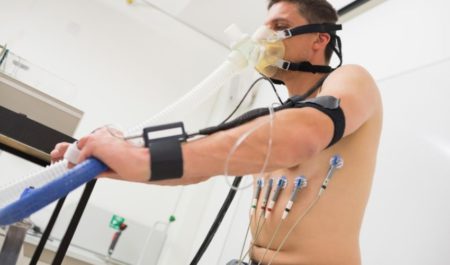Clinical exercise physiology comes among the various parts of exercise physiology. It is a systematic study of different physical activities that influence the body. Among the other parts of exercise physiology, sports exercise physiology gets a spot. So, it is the study of exercises about the enhancement of fitness for athletes. But, a clinical exercise physiologist focuses on some relevant workouts.
These exercises help in the treatment and prevention of chronic diseases, therapeutic disorders, and osteoporosis conditions. So, have a look at this article to understand both these professions in a clearer manner. Generally, hospitals, physiotherapy centers, and sports medicine clinics recruit clinical exercise physiologists. But, they have a wider field to explore and treat as well.

Clinical Exercise Physiologist Works.
To patients suffering from chronic illnesses, they prescribe routines filled with relevant exercises. Then, they motivate their patients to continue with their exercise routines. The potentiality of a clinical exercise physiologist is admirable. They are professionals in their field. These professionals are experts in their profession. Moreover, they have the power to motivate their patients as well.
What Ailments do a Clinical Exercise Physiologist Treat?
1. Heart Ailments.
The clinical exercise physiologist prescribes cardiovascular exercises to patients suffering from heart diseases. So, exercises such as, jogging and walking play a great role in enhancing the strength of your heart.
2. Diabetic Patients.
Diabetic patients suffer from low insulin and high glucose level in their blood. The clinical exercise physiologists prescribe several exercise therapies. Thus, these therapies help to keep the glucose level in the blood of diabetic patients in check. In the case of chronic overweight diabetic patients, physical exercises are performed under the direct supervision of these professionals.
3. Orthopedic Diseases.
Elderly individuals suffering from orthopedic diseases such as arthritis and osteoporosis. Such diseases have a closer relationship to joint pain.

Clinical exercise physiologists prescribe exercise therapies such as swimming. Thus, they prescribe swimming as it imparts less impact on their joints.
4. Diseases Related To Anxiety And Depression.
Clinical exercise physiologists treat anxious and depressed patients with their impressive therapies. With the relevant exercises they suggest, the serotonin levels in the patients’ bodies increases. As a matter of fact, the deficiency of serotonin in the body causes stress and anxiety in a person. At any rate, your mental and physical health depends on your stress level.
Several patients suffer from diabetes, orthopedics, psychological disorders, and other chronic diseases. Clinical exercise physiologists treat these patients with several exercise programs.
Any Different In Physical Therapists.
The terms, physical therapists and physiotherapists are attributed to the same person. Physiotherapy is one of the allied wings of the health profession. A physical therapist treats a person suffering from illnesses and injuries. These illnesses and injuries hinder the movement and performance of daily functional activities.
Physical therapists treat patients suffering from chronic or acute pain. They also treat the ones with soft tissue injuries and arthritis. These professionals help the ones with cartilage damage, gait disorder, and physical impairment.
Methods of Treatment Use.
Physical therapists adopt different methods to treat their patients. In accordance with their patients’ conditions, these professionals use several impressive methods. These include shock wave method and exercise therapy. The patient’s history and physical examination are important to apply these methods. The findings of X-rays, CT scans, and MRI hold importance too.

Such laboratory and imaging studies help identify better and build a great treatment plan.
Physical Therapists Appointed.
Physical therapists work in a variety of organizations. Especially, these professionals work in many private sectors. Physical therapy clinics, outpatient clinics, health and wellness clinics appoint these professionals. The other places they work at include, rehabilitation centers, nursing homes, and schools.
Clinical Exercise Physiologist Vs. Physical Therapist.
Both these professionals share a similar mission as well as the direction of work. Both of them prescribe and recommend workouts and physical movements. These recommendations help many people suffering from diseases and injuries. The main mission of these professionals is to improve the condition of their patients.
Their missions share a great deal of similarity. But, the methods they use and their way of working are different. Then, have a look at the following differences. The upcoming content includes a well-framed list of differences between both the professions. Also, this list will help you find which profession has an edge over the other.
1. One Restores Movement, Other Reduces Intensity.
A physical therapist restores the movement of dormant and restricted body parts of a patient. On the other hand, a clinical exercise physiologist tries to relieve or decrease the intensity of chronic diseases. Thus, he/she does so by prescribing relevant physical exercises to their patient.
2. Both the Studies Don’t Have The Same Epicenter.
Exercise physiology is the study of the biological influence of workouts on the cells and organs of the human body. On the other hand, physical therapy is the study on several methods and workouts. Then, this study helps restore the movements of a person’s body parts that have been dormant due to injuries, diseases, or, old age.
3. Both The Professions Thrive On A Different Ambition.
By knowing the motto of a clinical exercise physiologist, it is easier to have an idea on what is exercise physiology. Thus, clinical exercise physiologists aim to provide health benefits to their patients. They treat patients with arthritis, diabetes, cardiovascular obesity, and other chronic ailments. But, physical therapists focus on developing the functional abilities of their patients.

Then, they also try to restore the movements of restricted body parts of an ailing person. They treat their patients with several workouts and treatments.
4. Their Program Courses Don’t Share Many Similarities.
Both professions are graduate degree programs. Moreover, they are the wings of health science. Yet, the program courses of each differ from the other. Clinical exercise physiology include sports, nutrition, and exercise science. But, physical therapy courses include anatomy, kinesiology, exercise physiology, and orthotics.
5. They Conduct Different Tests to Examine.
Physical therapists use CT scan, MRI, and X-Ray to identify their patient’s condition. But, fitness tests help clinical exercise physiologists to treat their patients. Then, this test, in turn, gives an idea about the patient’s heart rate, oxygen level, and blood pressure.
6. They have Different Patients as Well.
Physical therapists treat patients with physical disabilities. They also help the ones who are unable to move. Such situations may arise due to illnesses or injuries the patients have come across. Whereas, clinical exercise physiologists treat a different category of patients. Their patients are the ones suffering from diabetes, arthritis, obesity, and cardiovascular diseases.
7. One Profession Has a Wider Arena to Rule.
Exercise physiologists have limited working places. These include hospitals, physical therapy centers, fitness centers, and medical clinics.

Whereas, the physical therapists find his/her job in health and wellness clinics and physiotherapy centers. They work in sports training centers and schools too.
8. They Have Different Pay-Scales Too.
The annual salary of physical therapists is over $80,000 in some nations. Whereas, the highest annual salaries of clinical exercise physiologists is about $50,000.
The Final Thoughts
The content of this article has been developed by paying heed to the differences which exist between both of them. Then, it has been observed that though both the professionals differ in some ways. Yet, there are similarities between them as well. In both professions, exercise and physical movements lay the foundation.
In the present technical age, mental work surpasses physical labor. Thus, the demand for these professionals is almost sky-reaching.
So, every profession has its own facet. Instead of comparing, it is better to find the positive side of each profession and rectify the negative ones.
